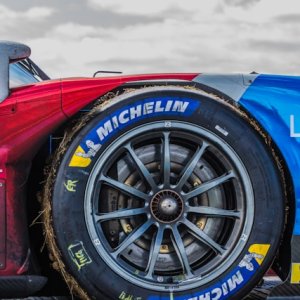Joint Procurement Strategy Ensures Growth

STORY INLINE POST
Its backstory is interwoven with the US industry, but Navistar continues to see a strong future in Mexico’s automotive sector, backing up that faith with investments despite the nationalistic rhetoric from President Trump that has impacted the local industry. Carlos Pardo, Vice President and Managing Director of Navistar Mexico, says the company’s focus is on Mexico rather than on what could possibly happen in the US. “Uncertainty definitely does not help. Although we do have a Plan B plan should the worst happen with NAFTA, I do not think that it will come to this. It is in the best interest of the three countries to have a strong treaty.”
Navistar’s confidence in the country’s automotive future is reflected in its recent investments and changes in production. In 2016, the OEM announced it would produce a vehicle for GM at Navistar’s plant in Springfield, Ohio, meaning that current US production of Navistar’s medium-sized trucks will be transferred to the manufacturing site in Escobedo, Nuevo Leon, by late 2017. “Our site in Escobedo represents around 50 percent of our worldwide production. It is by far the most important site for Navistar,” says Pardo.
With only one manufacturing shift and two in paintwork and cabins, Pardo says the Escobedo facility can easily add a second manufacturing shift. “There is still a lot of room for growth.” Should there be any doubt regarding the company’s confidence in the country, Navistar has also invested in a new metal forming area at the plant to stamp metal pieces.
Pardo also believes that Volkswagen’s acquisition of 16.6 percent of the company’s shares will help Navistar consolidate its position in the Mexican market. “Although the company will continue operating in an independent manner, we will see an impact in terms of cost reductions, which will help us improve our competitiveness, profitability and technology.”
Pardo believes that Volkswagen’s strategy for procurement for both businesses will not hinder the development of a local supply chain. “In terms of content and cost, having a single procurement strategy does not imply not having regional or local suppliers. What makes sense for us is having local supply with global negotiations.”
Despite joint innovation projects with Volkswagen, Navistar will not be leaving its OnCommand Connect program behind. In addition to a standard telematics service with GPS, the program provides real-time information on the physical and mechanical status of the vehicle, and also on driving habits. Navistar boasts 5,000 units connected with OnCommand technology and the target for the end of 2017 is 9,000 connected vehicles in Mexico. Along with its OnCommand technology, Navistar also developed a program called “Repair Advocate” for fleets, which is managed by experts that advise clients of any anomalies, alarms or mechanical updates to keep their fleets running in optimum condition. The service, Pardo says, will help clients develop a more profitable business.
Navistar’s telematics services are embedded in a strategy the company follows to create loyalty among clients. It has also installed a training center for clients, distributors and employees and hopes to soon open new centers in Monterrey and the Bajio region. The company is also working alongside Anahuac University to develop online courses and degrees. “The goal is to have the best sales force and technicians in the country,” Pardo says.
Pardo projects 15 percent company growth in Mexico by the end of the year, which he acknowledges is “an aggressive projection but we have the support of our clients and the market behind us.” This will not be dependent on the scrappage scheme, since the number of units the government will permit in the scheme is limited to 6,000. “While the price ceiling offered is adequate, there are more than 400,000 vehicles in Mexico that should be scrapped,” says Pardo. “With such a small budget dedicated to the replacement scheme, the country will never reach its environmental or safety goals in heavy vehicles.” Until the low-quality units are taken off the roads, Pardo says, there is no point in introducing stricter pollution regulations.
Navistar is the second-ranked heavy truck manufacturer, second in urban buses and third in medium-sized trucks in Mexico. “Navistar was one of only two OEMs that grew in 2016, three market points to be specific,” Pardo says.






















